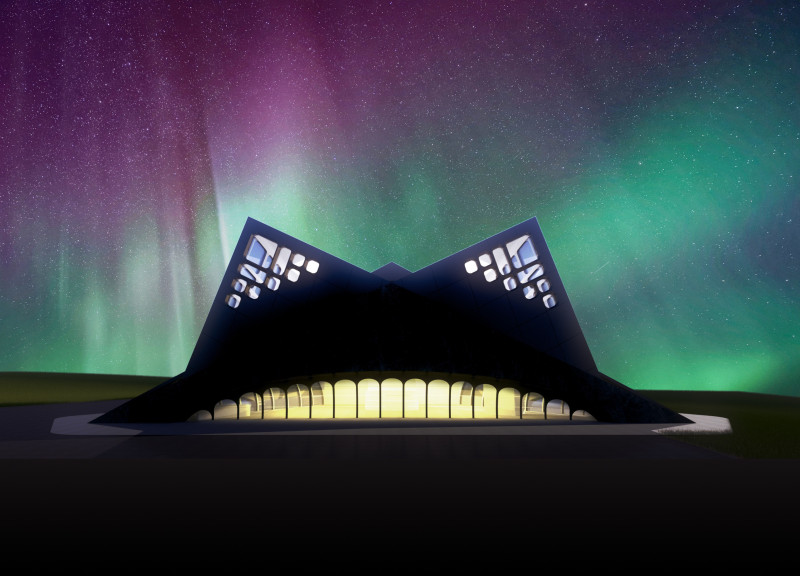5 key facts about this project
The Iceland Volcano Museum is located in a region characterized by its volcanic landscape, offering a place for education and exploration of Iceland's geological features. The design emphasizes the connection between the building and the surrounding nature, focusing on the interaction between the built environment and the landscape. It is arranged across three levels, each serving distinct functions that enhance visitor engagement and learning opportunities.
First Floor Layout
The first floor serves as the main area for visitors, featuring an information center, cafe-bar, cafe-kitchen, gift shop, and restrooms. This setup addresses both educational and leisure needs, creating a welcoming environment. The presence of cowork spaces and private offices on this level supports day-to-day operations, enabling staff and visitors to engage comfortably. The layout is designed to foster interaction and accessibility for everyone.
Second Floor Exhibition Space
The second floor is dedicated to an exhibition hall that displays various aspects of volcanology and the region's unique geological characteristics. This focus on education allows visitors to deepen their understanding of Iceland's natural environment. Additionally, private offices and meeting rooms provide important spaces for administrative tasks, promoting efficiency within the museum.
Roof Design Features
The roof plan includes a terrace and balcony that overlook the exhibition hall and surrounding landscape. These outdoor areas provide opportunities for visitors to appreciate the beauty of the Icelandic scenery. They also allow moments of calm and reflection. By connecting indoor exhibits to the outdoors, the design creates a richer experience for all who visit.
Finishing Elements
While specific materials are not noted, the design suggests a focus on durability and responsiveness to the environment. The integration of outdoor spaces and the building’s orientation highlight the relationship to the landscape, enhancing the visitor experience. Attention to these details reinforces the museum's purpose as a valuable educational resource in this remarkable natural setting.






















































